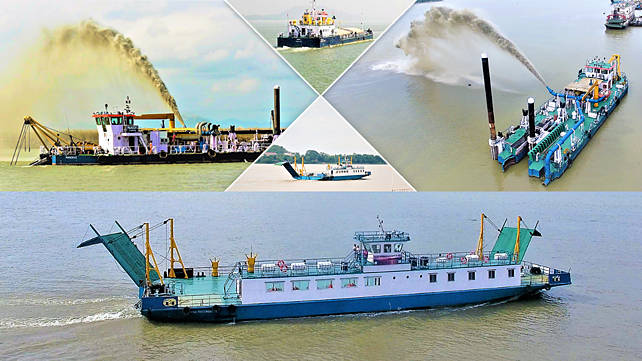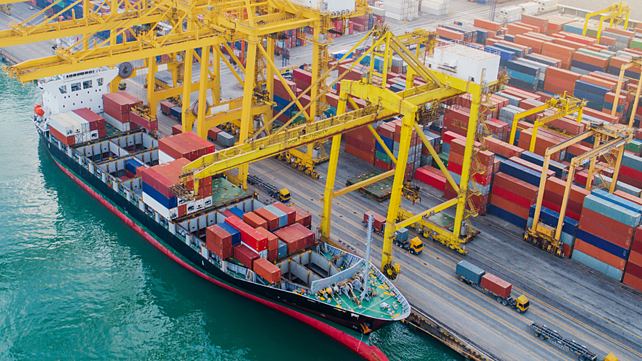
Inland waterways are popular modes of freight transportation in many developed countries. In the Netherlands, it accounted for approximately 40% of total inland freight transport in 2019, as per Eurostat. Though India has the potential to exploit waterways as a source for freight transportation, its usage is low compared to other developed countries.
As per Frost & Sullivan's analysis, the modal share of cargo transported by inland waterways in India has increased from 0.5% in 2015 to 2% in 2020. As per National Waterways Act, 2016, the government declared 106 new waterways and existing ones to reduce the stress on rail and road freight transportation.
Cargo carried by National Waterways accounted for 69% of total inland cargo moved in 2019-20 (tonnes km) compared to 14% of the freight hauled by volume (tonne). Goa Waterways, Maharashtra Waterways, Gujarat Waterways, and Sunderban Waterways accounted for 31% of cargo carried (tonne km), and 86% of freight moved in volume.
These inland waterways transport various commodities such as coal, iron ore, petroleum, oil & lubricants (POL), cement, steel, and agricultural commodities. Waterways are cheaper to transport cargo than road and railways and also environment friendly.

Maritime Vision 2030
As per Maritime Vision 2030, several initiatives are to be undertaken to increase the share of inland waterways to 5% by 2030. The number of operational inland waterways is expected to increase from 16 to 23 by 2030 by expanding more than 5,000 km of National Waterways under various development phases.
This will likely increase the annual cargo moved by National Waterways from 73 metric tonne per annum (MTPA) in 2020 to 200 MTPA by 2030. In addition, coastal shipping is expected to grow from 245 MTPA in 2020 to 380 MTPA by 2030, which is scheduled to open up opportunities for connectivity between ports with inland waterways facilities in the eastern region.
Major infrastructure and facilities development includes the development of intermodal terminals, Roll-on/roll-off (RO-RO), and roll-on/roll-off passenger (Ro-Pax) facilities to promote cargo and passenger traffic through inland waterways in east and west coast regions.
Frost & Sullivan's analysis indicates that several key challenges need to be addressed, including improving operational efficiency, reducing logistics costs, and enhancing traceability and visibility of the cargo movement supply chain.
Digitalisation Of Infrastructure To Revolutionise Inland Waterways
Inland waterways for freight transportation offer opportunities due to an increased focus on multi-modal connectivity. Public-Private Partnership (PPP) is expected to play a crucial role in terminal operations and maintenance. Under smart ports development projects, port infrastructure modernisation is expected to be linked with inland waterways facilitates to encourage multi-modal freight transportation.

Our analysis indicates that the next big revolution in inland waterways will likely be in the areas of digitisation, multi-modal integration, asset capacity management, and automation of both facilities and vessels. These necessitate an increased need for digital platforms to link logistics service providers with terminal operators across the existing and proposed inland waterways. Capacity sharing and real-time cargo tracking and monitoring are areas that have the potential for digital opportunities.
Multi-modal integration will require digital platforms to share information with operators in other transportation modes such as railways, port operators, road freight service providers, and dedicated freight corridors (DFC) to ensure the smooth movement of cargo. Traffic monitoring, terminal operations management, utilisation, and optimal use of vessels for goods movement are some of the areas expected to open up opportunities in the medium term.
The government's priority to develop inland ways as a mode of freight is expected to open up many opportunities in infrastructure digitalisation. The government's fiscal and monetary support measures and streamlining regulatory hurdles are some of the factors that need to be addressed by the policymakers to achieve the targets set by Maritime Vision 2030.
About the Author: TJ Sivan is a Senior Consultant, Supply Chain & Logistics Practice at Frost & Sullivan.
NB: This article is a part of our Knowledge Series, authored by experts from Frost & Sullivan.